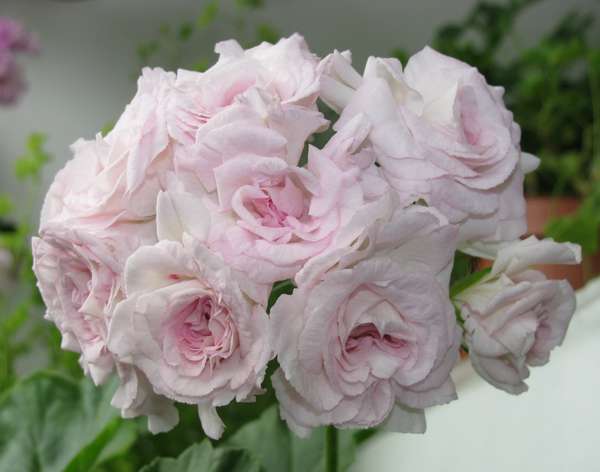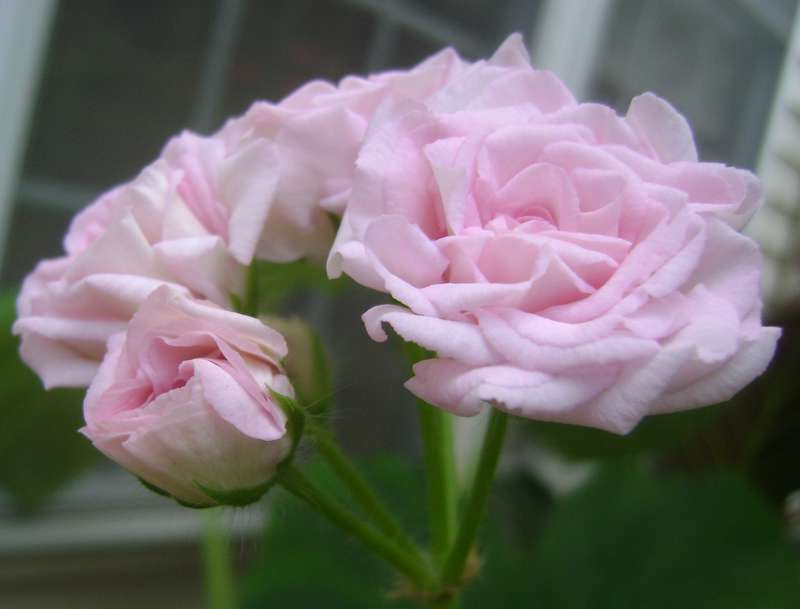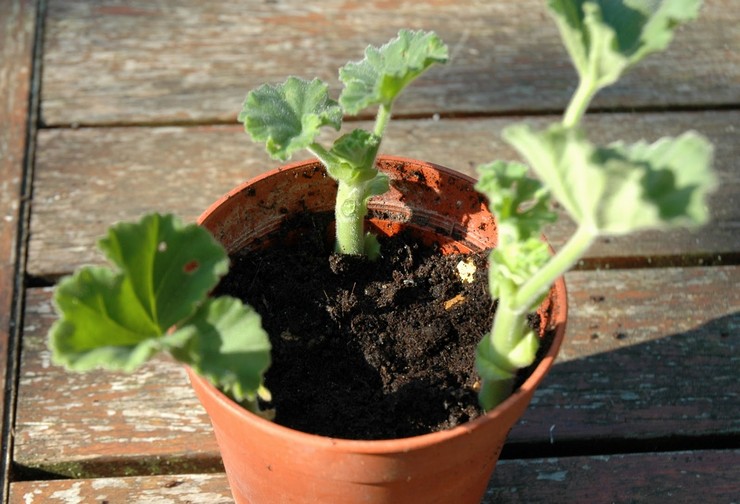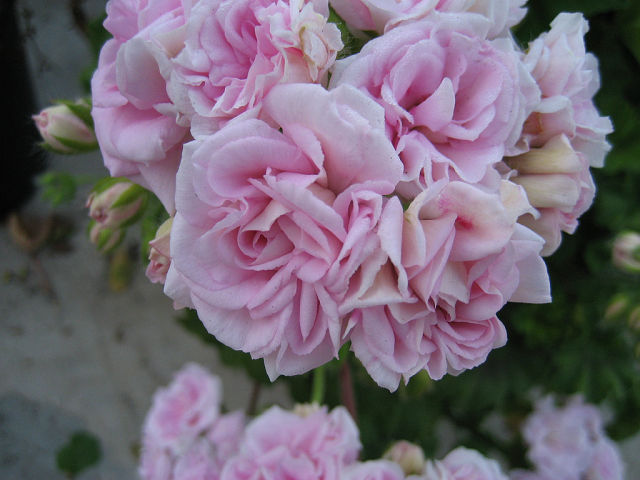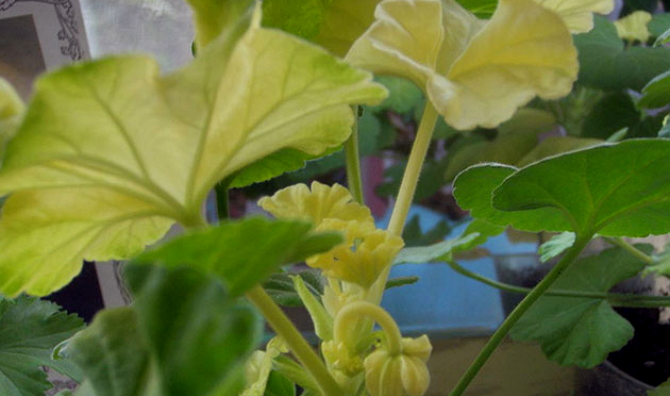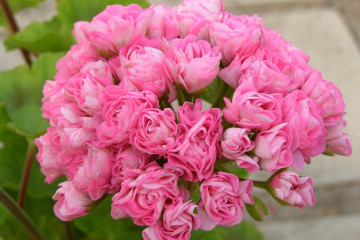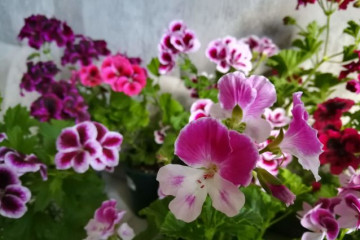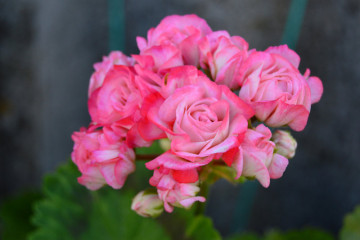Pelargonium Rococo
Content:
Pelargonium Rococo is a beautiful plant that has an original appearance. This hybrid can be a decoration for any home. Its flowers resemble rosebuds. At the same time, the variety is distinguished by its unpretentious care, therefore it is chosen by many growers around the world. Domestic lovers of indoor plants are not very familiar with this variety, and they will certainly be interested in a detailed description.
Pelargonium Rococo - what is this decorative hybrid variety
This hybrid culture is part of the Geraniev family. It includes more than 800 species, each of which contains many varieties. In the description of Rococo pelargonium, it is noted that the culture has beautiful inflorescences and rapid development.
This hybrid was obtained on the basis of zonal and ivy crop species. The variety was bred in the United States in 1981. Parent cultures can have different shades of petals - red, white, purple. At the same time, Rococo has large pink flowers. They resemble roses in appearance.
The plant is distinguished by vertically directed shoots, which is typical for ivy-leaved varieties. But the leaves are shaped like zonal species.
A distinctive characteristic of the culture is considered to be a beautiful and lush flowering. It lasts 9-10 months. The variety is considered unpretentious to care for, so it is often chosen by flower growers for home breeding. Even beginners can grow a beautiful plant.
The description of the variety indicates that this pelargonium is characterized by large pink buds. They go well with light green leaves that have a rounded shape and wavy edges. The bushes are compact and neat in appearance.
Growing Pelargonium Rococo at home
In order for pelargonium to fully develop, it needs high-quality care. The plant needs to provide optimal conditions.
Illumination and temperature conditions
The plant needs good lighting. When grown in a dark place, it will not be possible to wait for the flowering of the crop. Therefore, it is recommended to put the flower pot on a well-lit windowsill. Thanks to this, pelargonium will be able to form large peduncles and powerful shoots.
The lack of light negatively affects the decorative properties of the plant. In this case, the leaves become small, the stems are bare and elongated, and the flowers are completely absent. In order for the plant to retain its attractive appearance, it must be in the sun for 4-8 hours a day. In winter, such an opportunity is often absent, so artificial sources of lighting should be used.
The plant needs a moderate temperature regime. The best option will be indicators at the level of +20 .. + 23 degrees during the day and +12 .. + 15 degrees at night. Keep the temperature cool at all times in winter.
In summer, the bush should be moved to fresh air - for example, to the balcony. In the warm season, the culture grows beautifully and blooms on the street.
Watering rules and humidity
In order for the plant to develop normally, it is necessary to systematically moisten the soil. At the same time, it is important to establish the correct irrigation regime. With a moisture deficit, the leaves wither and turn yellow, and with an excess, root rotting begins.
Experts advise watering the crop as the top layer of the soil dries up. In summer, the amount of watering should be increased, and in winter, reduced.
Pelargonium does not require spraying. The procedure can even harm the plant, as the drops lead to stains on foliage and petals. In a cool room, they are able to provoke rotting of foliage and stems.
Top dressing and soil quality
Pelargonium requires a sufficient amount of fertilizer. It is recommended to use special mineral compositions that are intended for this plant.
- In the spring, you can add products that contain a lot of nitrogen.
- At the initial stage of flowering, formulations based on potassium and phosphorus are used.
Flower container size
In order for pelargonium to bloom magnificently, it needs a properly selected pot. A wide or deep container is not suitable for this plant.
The pot should be a little tight. Otherwise, active development of roots begins, while the growth of the ground part stops.
Pruning and replanting
Formative pruning of pelargonium is recommended in the spring. It helps to avoid pulling the stems of the shrub and gives it a neat appearance. When 3-4 leaves appear, it is necessary to pinch the side shoots. This stimulates the development of new branches.
Removal of peduncles after flowering is of no small importance. Otherwise, this representative of geraniums will begin to form fruits and seeds.
The plant is growing rapidly, so it periodically has to be transplanted into a new pot. The procedure should be performed when roots appear from the drainage holes. The bush should be transplanted during the growing season - it is best done in the spring.
Features of flowering plants
Pelargonium of this variety is characterized by lush flowering. With proper care, it lasts quite a long time.
A period of activity and rest
In the spring, the culture begins a period of activity. This occurs during the period of increasing daylight hours. During this period, the culture requires more frequent watering and feeding.
The first buds appear in mid-spring, and the flowering itself can last up to 9 months. At this time, you need to constantly cut off wilted buds and provide the flower with comfortable conditions.
In winter, the plant needs to provide a dormant period. At this time, the bush is resting and stocking up on strength. At the same time, it is important to provide him with the correct temperature regime - it is best to keep the Rococo pelargonium cool, away from heat sources.
Types and shape of flowers
The plant has monochromatic rounded flowers. In appearance, they resemble rosebuds with a simple perianth. The flowers are relatively large and form complex umbrellas.
The procedure for propagating a flower by seeds, how and when is it better to do it
The hybrid variety can be propagated by seed. However, planting material should be purchased at the store, rather than collecting yourself. Otherwise, it will not be possible to preserve the properties of the plant.
To germinate seeds, you need to do the following:
- Each grain should be wiped with sandpaper to enhance germination.
- Place in a small container with a damp substrate.
- The row spacing should be 3 cm.
- Sprinkle on top with a thin layer of substrate.
- Place the container in a room with room temperature and water the plants from time to time.
- When sprouts appear, the container should be moved to the windowsill and slightly lower the temperature for root development.
- When 3 leaves appear, the sprouts should be dived into new pots. In this case, the root collar should not be greatly deepened.
Growing problems, diseases and pests
The culture can suffer from attacks of spider mites, aphids, mealybugs. It is also often attacked by thrips. Of the diseases, root rot is the most dangerous. This disease is more common in young plants and is associated with a violation of the rules of care.
How to deal with them
When parasite larvae appear or symptoms of pest attacks occur, it is worth immediately treating the bush with insecticides.
Root rot cannot be cured. In such a situation, you will have to get rid of the bush.
Pelargonium Rococo is a popular indoor crop that has excellent decorative properties. To get results in growing a plant, it is necessary to provide it with quality care.
